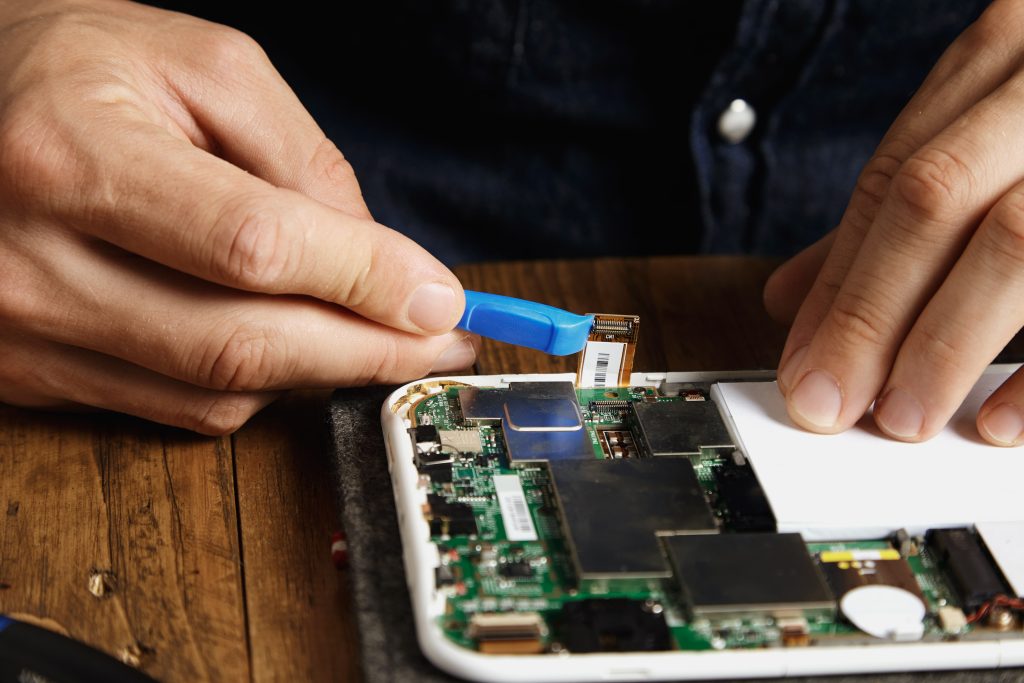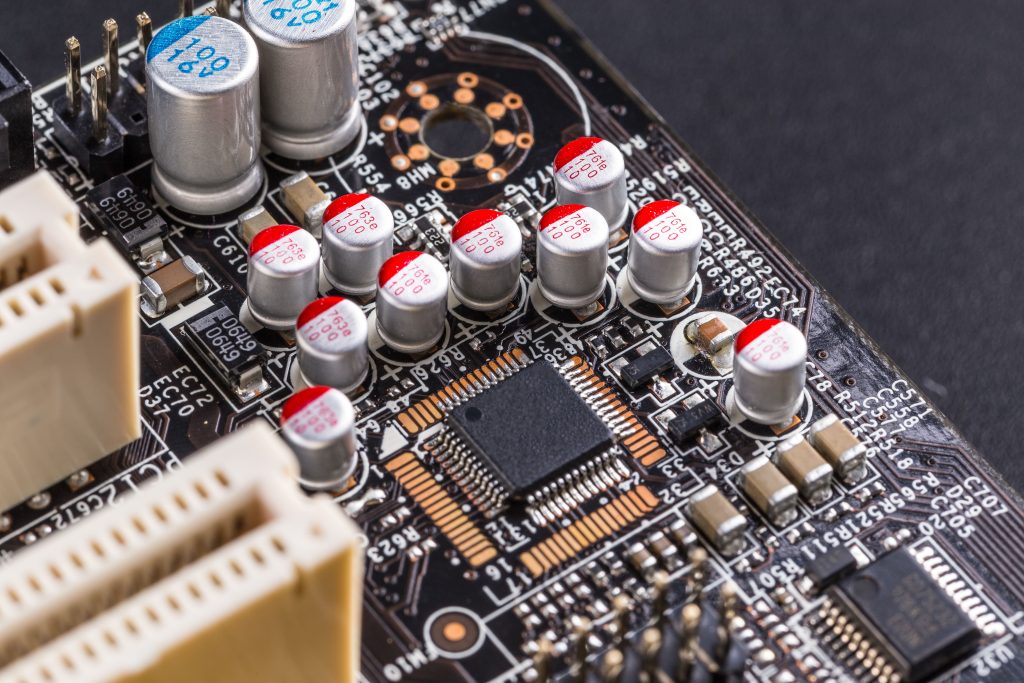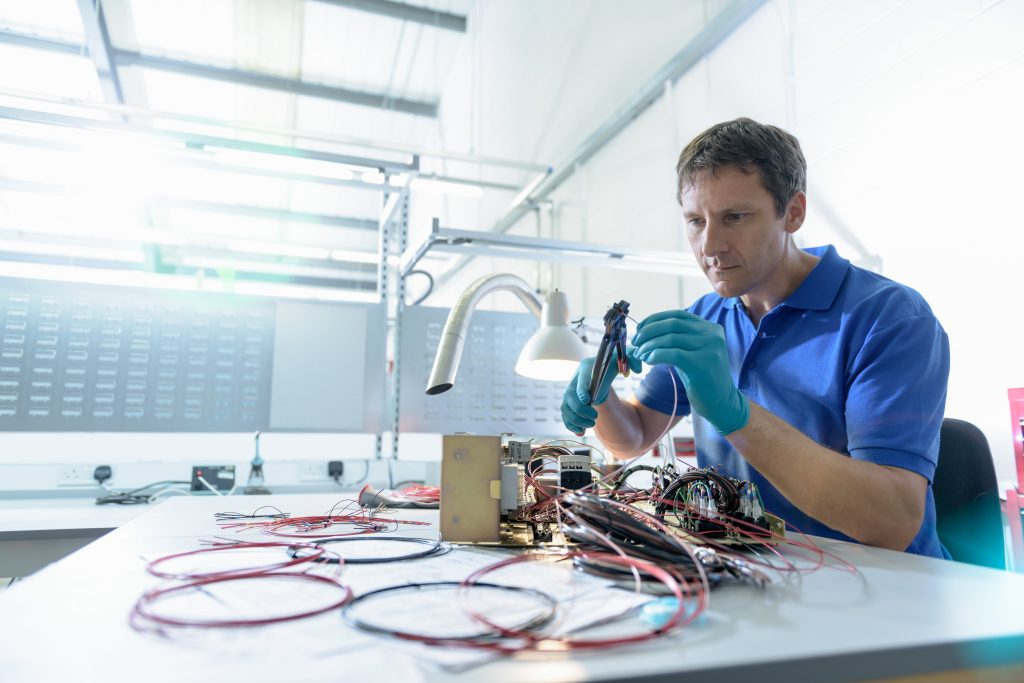
Introduction To Electronics: Unveiling The Magic Of The Digital World
Have you ever wondered how your smartphone works or how your computer processes information? The answer lies in the fascinating world of electronics. Electronics is the foundation of the digital age we live in, and understanding its principles can unlock a whole new level of understanding and appreciation for the technology that surrounds us.
From the moment we wake up to the time we go to bed, electronics play a vital role in our daily lives. Whether it’s the alarm clock that wakes us up, the coffee machine that brews our morning cup, or the television that entertains us in the evening, electronics are everywhere. Yet, many of us remain unaware of the magic that happens behind the scenes.
In this article, we will take a closer look at the world of electronics and unveil the secrets behind its functioning. We will explore the basic principles that govern electronic devices, demystify complex concepts, and provide a beginner-friendly introduction to electronics. Whether you are a curious individual eager to learn or a tech enthusiast looking to deepen your knowledge, this article will serve as a gateway to the captivating world of electronics. So, let’s embark on this journey and discover the magic of the digital world together.
What is Electronics?
Electronics is a branch of science and technology that deals with the control and flow of electrons in order to create, transmit, and manipulate electrical signals. At its core, electronics is based on the principle of controlling electrons to perform various tasks and functions.
The basic principle of controlling electrons lies in the use of specialized devices and components, such as transistors and integrated circuits. These devices are designed to regulate the flow of electrons by switching them on or off, allowing for the creation of binary signals (0s and 1s) that form the foundation of digital electronics.
By controlling the flow of electrons, electronics enables the creation of electronic circuits and systems that can perform a wide range of functions, from simple operations like turning on a light switch to complex tasks like processing and storing vast amounts of data in computers.
Electronics has revolutionized numerous industries and fields, from telecommunications to healthcare and from transportation to entertainment. It has become an integral part of our everyday lives, powering the devices and technologies we rely on for communication, work, leisure, and more.
Electronics is the mesmerizing art and science of harnessing the power of electrons to shape our digital world. It’s not just about gadgets reviewing; it’s the backbone of our modern civilization. Understanding electronics is akin to possessing the key to unlocking limitless innovation. In today’s interconnected society, electronics education is the gateway to countless opportunities and the foundation for technological advancement. Whether you’re a curious beginner or a seasoned enthusiast, diving into electronics education will empower you to turn ideas into reality, fueling the transformative changes that define our era.

The History of Electronics
The history of electronics dates back to the late 19th century when inventors began exploring the properties of electricity and how it can be controlled and harnessed. One of the key milestones in the field was the invention of the vacuum tube by Thomas Edison in the early 20th century. This device, which controlled the flow of electrons, paved the way for the development of early electronic systems.
Another significant advancement came in the 1940s with the invention of the transistor by Bell Laboratories scientists. This revolutionary device replaced the bulky and power-consuming vacuum tubes, leading to the miniaturization of electronic components.
In the 1970s, the integrated circuit (IC) was developed, allowing for the integration of numerous electronic components onto a single chip. This breakthrough marked the beginning of the digital revolution, making computers and other electronic devices more compact, powerful, and accessible.
Today, electronics continues to evolve with advancements in technology and the development of cutting-edge devices such as smartphones, wearables, and smart home systems. The field of electronics has undoubtedly shaped the modern world and continues to drive innovation in various industries.
Components of Electronics
Electronics is a field that revolves around the utilization of various essential components to build and operate electronic devices. These components play crucial roles in the functioning of electronic circuits, enabling the creation of complex systems.
Resistors are one such component that controls the flow of electric current in a circuit. They limit the current to protect other components from damage. Capacitors store and release electrical energy, smoothing out voltage fluctuations in a circuit. They are also used in timing circuits and filtering applications.
Transistors are the building blocks of modern electronics. They amplify signals, switch currents on and off, and serve as electronic switches. Integrated circuits (ICs), made up of transistors and other components, are the backbone of digital devices. They integrate multiple functions onto a single chip, making them compact and powerful.
Another important component is the diode, which allows electric current to flow in only one direction, crucial for rectification and signal processing.
These components, along with many others such as inductors and transformers, are the fundamental building blocks of electronic circuits. Understanding their functions and importance is essential for anyone interested in electronics.
Circuits and Circuit Design
Electronic circuits are the foundation of modern technology, powering everything from our smartphones and laptops to our cars and appliances. At their core, circuits are the intricate paths that allow electrical current to flow and perform specific tasks. They consist of various components, such as resistors, capacitors, transistors, and diodes, working together to create electrical functions.
Circuit design plays a crucial role in the functionality and efficiency of electronic devices. It involves creating a blueprint or roadmap of how the components should be connected and interact with each other. Proper circuit design ensures that the current flows smoothly, and the desired output is achieved.
Effective circuit design not only considers the technical aspects but also takes into account factors like power consumption, size, cost, and reliability. Designers must carefully choose the components, determine their values and specifications, and arrange them in a way that optimizes performance.
Whether it’s a simple circuit to power an LED light or a complex circuit for a computer processor, the design stage is essential for achieving the desired outcome. It allows for customization, flexibility, and adaptation to specific requirements.

Digital vs. Analog Electronics
Digital electronics and analog electronics are two distinct types of electronic systems based on how they process and represent information.
In digital electronics, information is represented as discrete values or states, typically represented by binary digits (bits) such as 0 and 1. Digital circuits process these discrete signals using logic gates, which perform operations like AND, OR, and NOT.
Real-world examples of digital electronics include digital watches, smartphones, computers, and digital cameras. These devices utilize the binary system to encode and process data, allowing for complex calculations and digital functions such as arithmetic operations, data storage, and digital communication.
On the other hand, analog electronics deals with continuous or varying electrical signals that can take on a range of values. These signals can represent variables like voltage, current, and frequency. Analog circuits process these signals using components such as resistors, capacitors, and amplifiers.
Analog electronics are commonly used in applications where signals need to be processed in their original continuous form, such as audio amplifiers, radio receivers, and sensors. These devices work by manipulating the amplitude, frequency, or phase of analog signals to perform functions like amplification, modulation, and filtering.
How Electronics Work
Electronics work by controlling the flow of electricity through various components and circuits. The flow of electricity in electronic devices can be explained in a simplified manner as follows:
1. Power Source: Electronic devices require a power source, usually in the form of batteries or an electrical outlet, to supply the necessary electrical energy.
2. Circuits: Electric current flows through circuits, which are pathways made up of conductive materials like copper wires. Components like resistors, capacitors, and transistors are connected together in these circuits to control and manipulate the flow of electricity.
3. Control Signals: Electronic devices receive control signals through input devices like buttons or sensors. These signals determine the actions or functions of the device.
4. Processing: The control signals are processed by electronic components such as microprocessors or integrated circuits. These components perform calculations and execute instructions based on the input signals.
5. Output: The processed signals are then sent to output devices, which can be anything from a display screen to a speaker or a motor. The output devices convert the electrical signals into a form that humans can perceive, such as sound, light, or motion.
Practical examples of how electronics work include devices like smartphones, where the power source is a battery, circuits control functions like calling or internet connectivity, and the output is displayed on a screen or heard through speakers. Another example is a digital camera, where circuits process captured images and store them digitally, and the output is viewed on a screen or printed.
Overall, electronics work by controlling the flow of electricity through circuits and utilizing various components to process input signals and produce desired outputs.
Applications of Electronics
Electronics play a crucial role in various areas of our lives, revolutionizing the way we communicate, entertain ourselves, and even receive healthcare. Let’s explore some of the applications of electronics in different sectors.
In the field of communications, electronics enable us to stay connected with loved ones and work efficiently. Devices like smartphones and laptops, powered by electronics, facilitate instant messaging, video calling, and access to the internet. They have become an indispensable part of our daily lives.
Electronics have also transformed the entertainment industry. From digital music players to streaming services, electronic devices have made music more accessible and portable. Electronic dance music genres, such as house and experimental music, rely heavily on cutting-edge technologies like music notation software and electronic drum machines.
In healthcare, electronics have facilitated advancements in medical treatments and diagnostics. Modern medical devices like pacemakers, MRI machines, and electronic health monitors utilize electronics to provide accurate diagnoses and monitoring. They have significantly improved patient care and outcomes.
These examples only scratch the surface of the wide range of applications for electronics. As technology continues to advance, we can expect even more innovative and life-changing uses of electronics in the future.

Emerging Trends in Electronics
The field of electronics is constantly evolving, with new trends and innovations shaping the landscape of the digital world. One of the most prominent trends is the Internet of Things (IoT), which involves the interconnectivity of devices through the internet. This technology allows for seamless communication and data sharing between various devices, enabling smart homes, cities, and industries.
Another significant trend is the rise of artificial intelligence (AI). AI-based systems are becoming increasingly sophisticated, with applications ranging from voice assistants to autonomous vehicles. These advancements have the potential to revolutionize industries such as healthcare, transportation, and manufacturing.
Quantum computing is another exciting development in electronics. Unlike traditional computers that use bits, quantum computers utilize quantum bits, or qubits, which can exist in multiple states simultaneously. This allows for complex calculations to be performed at an unprecedented speed, promising breakthroughs in areas such as cryptography, drug discovery, and optimization problems.
These emerging trends in electronics have the potential to reshape our future. The IoT can enhance automation, efficiency, and connectivity on a global scale. AI could transform industries and improve decision-making processes. Quantum computing, with its immense computational power, can unlock solutions to currently intractable problems.
As technology continues to advance, it is crucial for researchers, engineers, and innovators to explore these emerging trends and harness their potential. They hold the key to unlocking a future with unlimited possibilities and transforming the way we live, work, and interact with the world.
Electronics in Your Life
Electronics are an integral part of daily life, playing a crucial role in various aspects. From the personal electronics device we use to check our emails and social media to the networked devices that connect us to the digital world, electronics surround us everywhere.
To fully understand and harness the power of electronics, learning and experimenting with them is essential. Start by exploring the basics of circuits, components, and their functionalities. There are numerous online resources, tutorials, and courses available that provide a solid foundation in electronics.
Practical experimentation is also key to gaining hands-on experience. Start by building simple projects like LED circuits or basic sensors. As you progress, try more complex projects such as building controllers or even small robots. This hands-on approach will help solidify your knowledge and understanding of electronics.
Don’t be afraid to make mistakes and learn from them. Electronics can be intricate, but with each experiment, you’ll gain a better understanding of how things work. The world of electronics is vast and ever-evolving, so keep exploring and staying updated with the latest advancements.
Staying Updated on Electronics
In this fast-paced digital age, keeping your finger on the pulse of electronics is more crucial than ever. The landscape of technology is ever-evolving, with breakthroughs and innovations happening at an astonishing rate. To stay at the forefront of the electronics realm, it’s essential to remain updated and informed. Follow the latest electronics news, subscribe to electronics magazines, join online forums, and connect with fellow enthusiasts. Elia Electronics is your go-to source for staying in the loop, where we’ll bring you the freshest insights, trends, and breakthroughs in the world of electronics. Make sure to bookmark us, subscribe to our newsletter, and never miss out on the electrifying journey of electronic discoveries.

Conclusion
In conclusion, delving into the world of electronics is an exciting journey that unveils the magic of the digital realm. By understanding the basics of circuits and components, and engaging in practical experimentation, one can gain hands-on experience and solidify their knowledge. Remember that making mistakes and learning from them is part of the process, and with each experiment, your understanding of electronics will deepen.
The field of electronics is vast and constantly evolving, so it is important to keep exploring and staying updated with the latest advancements. By doing so, you can unlock a wide range of possibilities and discover the wonders of electronics in various domains, from music technology to spatial computing and beyond. Embrace the fascination of electronics, and let your curiosity lead you to new and innovative discoveries in this mesmerizing field. Start your journey and experience the magic of electronics today.
